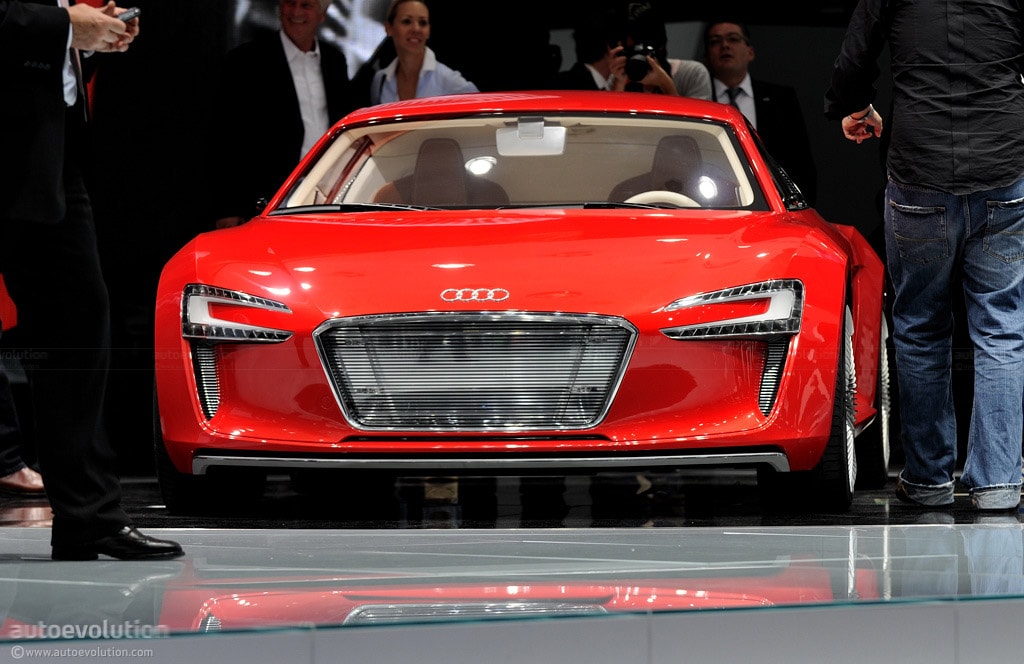At this year’s Frankfurt Auto Show, Audi dropped an engineering bomb, carried by the company’s electric supercar concept, the e-tron. The German manufacturer claimed that the e-tron produces 4,500 Nm (3,319 lb-ft) of torque.
The full specs stated that the car has 4 asynchronous electric motors, producing a total of 313 HP and 4,500 Nm of torque, which help it accelerate from 0 to 100 km/h in 4.8 seconds, with the system being powered by a 42.4 kilowatt hours lithium-ion battery. The car autonomy was declared to be around 250 kilometers.
As far as we know, we all took the bait. The media, the public, everybody was left speechless and believed that the E-tron had the torque figure of 3 and a half Bugatti Veyrons.
It took quite a while before someone realized that the torque figure in the given conditions was as impossible as spinning the Globe with your own feet. It was the guys at Automobile Magazine who figured out that the Germans at Audi had tricked us by offering the torque figure measured AT THE WHEELS and not in the mechanical loss sense, but rather in a multiplication-way.
You see, every automaker and automotive magazine reports the peak torque at the output shaft of an engine. It’s one of the basics rules one learns at school when studying physics: a common reference system must be used in order to obtain comparable results. In this case, torque measured at the wheels after being geared down and multiplied is, according to Automotive Magazine’s improvised algorithm, roughly ten times greater than at the motors’ shaft. So, they say that the e-tron actually produces 341 Nm (252 lb-ft).
Because it involves many assumptions (such as the maximum rpm of the e-tron’s engines) we don’t entirely trust Automotive Magazine’s calculation, but we sure get the idea. So, we’re pretty confident that the concept has a normal torque figure for a sports car, albeit starting from 0 RPM up, because it’s delivered by electric motors.
This story reminds us about the whole radioactive BMWs misunderstanding that polluted the world wide web this spring. There is a significant difference though: in that case it was the editors at British Autocar website that started the confusion, whereas now we are facing an example of German humor, delivered by Audi’s PR department.
The full specs stated that the car has 4 asynchronous electric motors, producing a total of 313 HP and 4,500 Nm of torque, which help it accelerate from 0 to 100 km/h in 4.8 seconds, with the system being powered by a 42.4 kilowatt hours lithium-ion battery. The car autonomy was declared to be around 250 kilometers.
As far as we know, we all took the bait. The media, the public, everybody was left speechless and believed that the E-tron had the torque figure of 3 and a half Bugatti Veyrons.
It took quite a while before someone realized that the torque figure in the given conditions was as impossible as spinning the Globe with your own feet. It was the guys at Automobile Magazine who figured out that the Germans at Audi had tricked us by offering the torque figure measured AT THE WHEELS and not in the mechanical loss sense, but rather in a multiplication-way.
You see, every automaker and automotive magazine reports the peak torque at the output shaft of an engine. It’s one of the basics rules one learns at school when studying physics: a common reference system must be used in order to obtain comparable results. In this case, torque measured at the wheels after being geared down and multiplied is, according to Automotive Magazine’s improvised algorithm, roughly ten times greater than at the motors’ shaft. So, they say that the e-tron actually produces 341 Nm (252 lb-ft).
Because it involves many assumptions (such as the maximum rpm of the e-tron’s engines) we don’t entirely trust Automotive Magazine’s calculation, but we sure get the idea. So, we’re pretty confident that the concept has a normal torque figure for a sports car, albeit starting from 0 RPM up, because it’s delivered by electric motors.
This story reminds us about the whole radioactive BMWs misunderstanding that polluted the world wide web this spring. There is a significant difference though: in that case it was the editors at British Autocar website that started the confusion, whereas now we are facing an example of German humor, delivered by Audi’s PR department.

